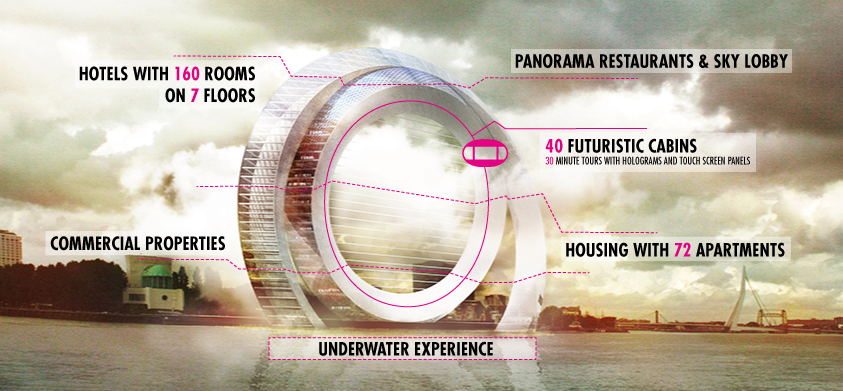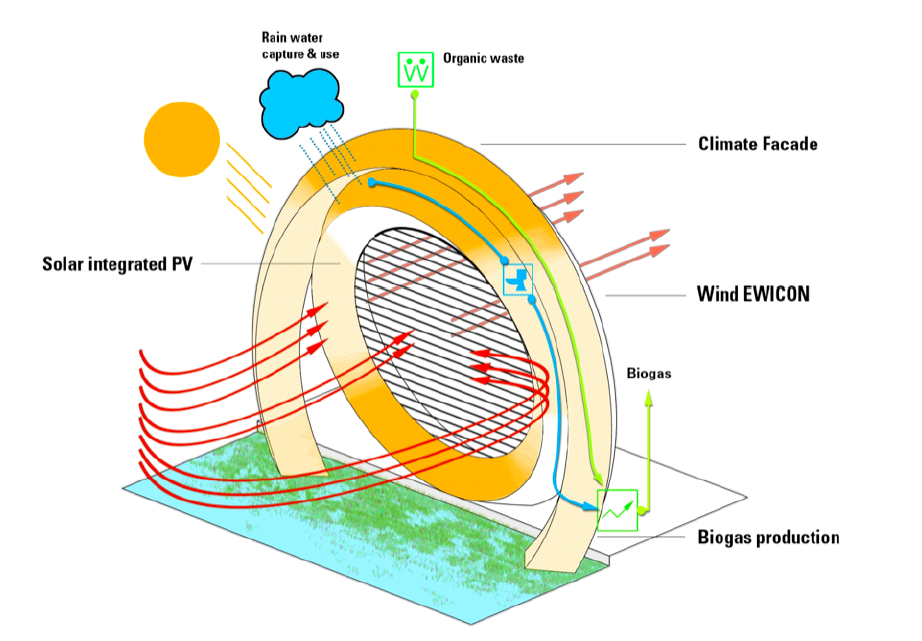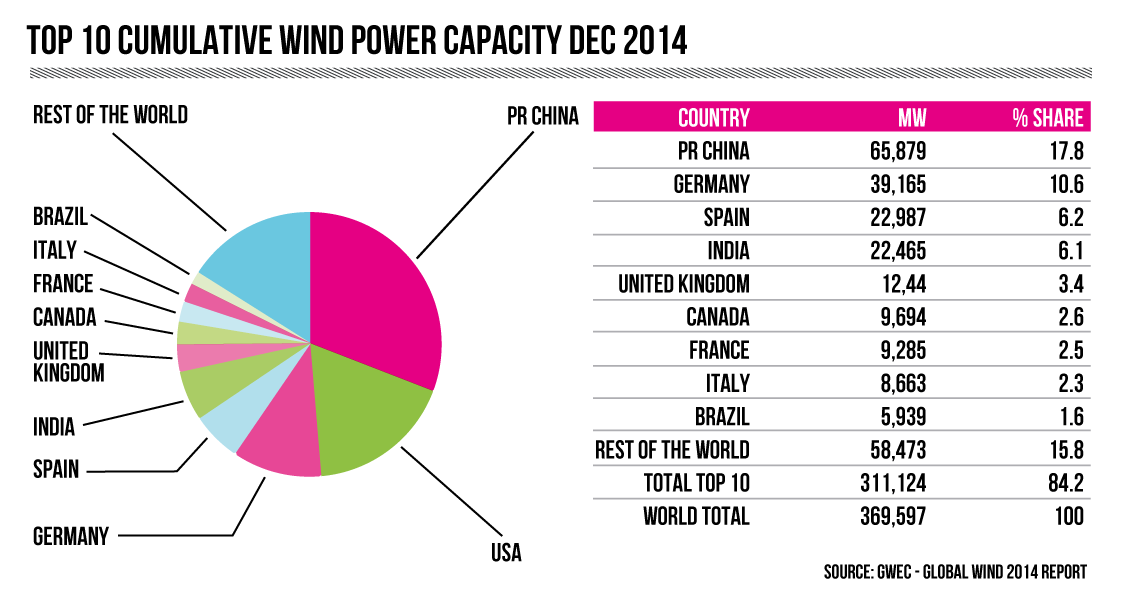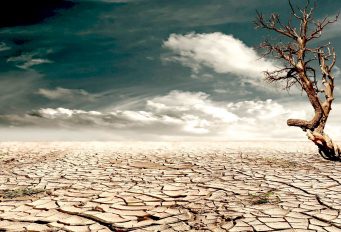![]() 4 minute read
4 minute read
According to research conducted by London School of Economics, wind farms are disastrous for real-estate business, decreasing the value of the houses located close to them by 12%. Can it be changed? Can we use this type of renewable energy converting the losses for the business into sustainable profit?
Windwheel
is an answer

Developed by the trio from Rotterdam (BLOC, Doepel Strijkers, and Meysters), the Dutch Windwheel[nbsp]is expected to become an icon for sustainability which implements the Internet of Things of tomorrow, enriches tourist experience, and promises to bring profit already in 10 years after opening. Developers are going to achieve the “sustainable icon” term by integrating the latest technologies and green energy. Regarding renewable power sources, the Windwheel is to adopt the EWICON – the technology is transforming the wind technology into electricity without the use of mechanical moving parts. “At this moment the energy EWICON delivers is too low, but we still have about seven years to optimise,” says the general manager, Lennart Graaff. The wind energy production will be silent and financially competitive with traditional wind energy technologies.
Besides wind power, the zero-emission goal will be accomplished by integrated solar PVTs. Not only energy production will turn the gawk-worthy landmark into one of a kind green-solution wheel, but also the integration of the “Heat Roundabout”. The Dutch Windwheel will be connected to a network of heat pipes connecting greenhouses, industrial buildings and residential consumers in South Holand. Also, futuristic powerhouse will have a closed water system, capturing rainwater, reusing all grey and black water, and converting organic waste into biogas – another power source.

[nbsp]
“Our aim is to develop a building that generates more energy than it uses,” says Graaff. “And we will [employ] every innovation that can contribute to that goal.”
Not to miss out the design of the building, created by talented South African architect Duzan Doepel. The Windwheel will feature two rings, two glass-and-steel loops: an inner ring comprised of shops, residences, offices, and a hotel, and an outer ring featuring a high-tech, ferris wheel-like attraction. Inspired by famous London Eye, the Windwheel will have 40 cabins with high-tech appliances. Overall the whole building will be implemented with smart technologies, digital walls and windows to enhance the experience of the visitors, residents, or office workers. Windows will be interactive displaying digital layers of data and holograms supporting 30-minutes excursion. Undoubtfully, Smart technologies will be an integral part of the building turning the Dutch Windwheel the most high-tech building of future.
“We don’t know yet which innovations will [definitely] be applied,” explains Graaff, “We want to work with the innovations of the future, not of today.”
Expecting growing tourist flow, developers forecast that the Dutch Windwheel will bring profit in 10-15 years, remaining the benchmark of the sustainable multi-purpose building. But who knows, the world has seen innovative real-estates booming even faster.
Blowing the
money away
While the development and installation of renewable energy sources are the critical tasks, windmills have proven to disastrous for the real-estate business. According to research by London School of Economics, large wind farms decrease the value of the houses located close to them by 12%. The author of the report, Professor Steve Gibbons, Director of LSE’s Spatial Economics Research Centre told to Daily Mail: “Property prices are going up in places where they are not visible and down in the places where they are.” Investigating the value of houses located within a 2 km radius to windmills, author underlined the decline of property price over a 12-year period. On the other hand, Professor’s findings contrast sharply with a report by the Centre for Economics and Business Research in March 2014. According to the second, there is no negative impact on house value within 5 km radius of a turbine.
Wind
in the world

According to GWEC – Global Wind 2014 report, in 2014 total investments in the clean energy sector reached a high of EUR 277bn. The global wind industry saw investments rise 11% to a record USD 99.5bn (EUR 88.9bn1) during the year. China remains the leader of the cumulative capacity of approximately 115 MW, increasing the share of installed capacity by 20 percent comparing to 2013. Cumulative capacity in Germany is under half the size of capacity in The USA, being third and second in the world respectively.




